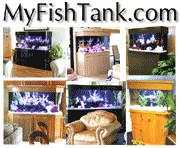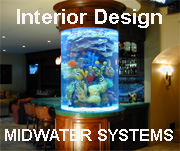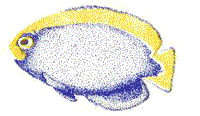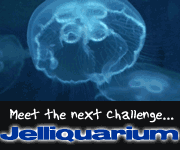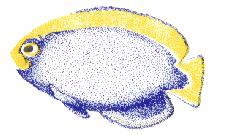|
Low Salinity, The Non-Chemical
Remedy
Ich, or more scientifically know as Amyloodinium and Cryptocaryon are
the most common fish parasites in saltwater aquariums.
The most common treatment is a copper based medication introduced directly
into the aquarium and used at a strength of 1.5 to 3.0 ppm for three
to four weeks.
The reproductive stage of the parasite is referred to as the tomont.
The encysted tomont undergoes repeated division, the rate of which is affected
by temperature and salinity. Each tomont may release as many as 256 dinospores,
which are capable of infecting susceptible fish.
Quite often after the hobbyist has used a medication and believes that
they have eradicated the parasite they seem to show up again a week or
so later. This is due to the fact that the hobbyist did eliminate the adult
parasites ( the ones visually on the fish ) but did not consider or allow
the medication to remain in the tank long enough for it to affect the juveniles
that were incubating down in the gravel and then hatched at a later time.
It is this juvenile or cyst stage that is resistant to the chemical treatment
and is able to remain ineffective for at least 2 weeks in the absence of
a fish host.
Many hobbyists include various invertebrates such as Shrimps, Crabs
and Seastars in their systems. Invertebrate do not tolerate copper at any
level ! So what can you do ? Many public aquariums, and Tom
Frakes of Aquarium Systems, recommend dropping the salinity of your aquarium
water.
Aside from the fact that a fish can have hundreds of parasites on its
exterior, there are also hundreds that make their way onto the gill membranes,
where they inhibit oxygen transfer, and into the interior. A parasite tends
to draw moister from its victim which results in dehydration.
The truth is that a fish in saltwater is normally being dehydrated even
without parasites. The simple fact that they are in a highly concentrated
salt environment which has a tendency to draw moister from their bodies
via osmosis. Fish are having to constantly replenish themselves with
moister. Now compound this normal situation with the addition of a parasite
who is drawing more fluids from the fish.
According to Tom, these parasites can not live in salinity's lower than
1.015 to 1.017. By dropping your salinity level down to this point you
will also lessen the effects of dehydration. Additionally one can effectively
treat a tank and never add any medication to it at all !
How fast can you drop the salinity ? I have been quite successful by
replacing 5 to 10 % of the aquarium water with fresh water on a daily
basis. Once I have reached the 1.015 to 1.017 level I maintain it
there for 2 weeks. After that point I begin doing my normally scheduled
water changes with saltwater which allows the salt level to rise back up
slowly.
The overall benefit is the fish are less stressed and are able to deal
with the parasite situation more effectively. Additionally one doesn't
have to remove the invertebrates from the aquarium ( Note: Not all invertebrates
will tolerate low salinity's, the invertebrates I have referred to are
cleaner shrimps ).
|
